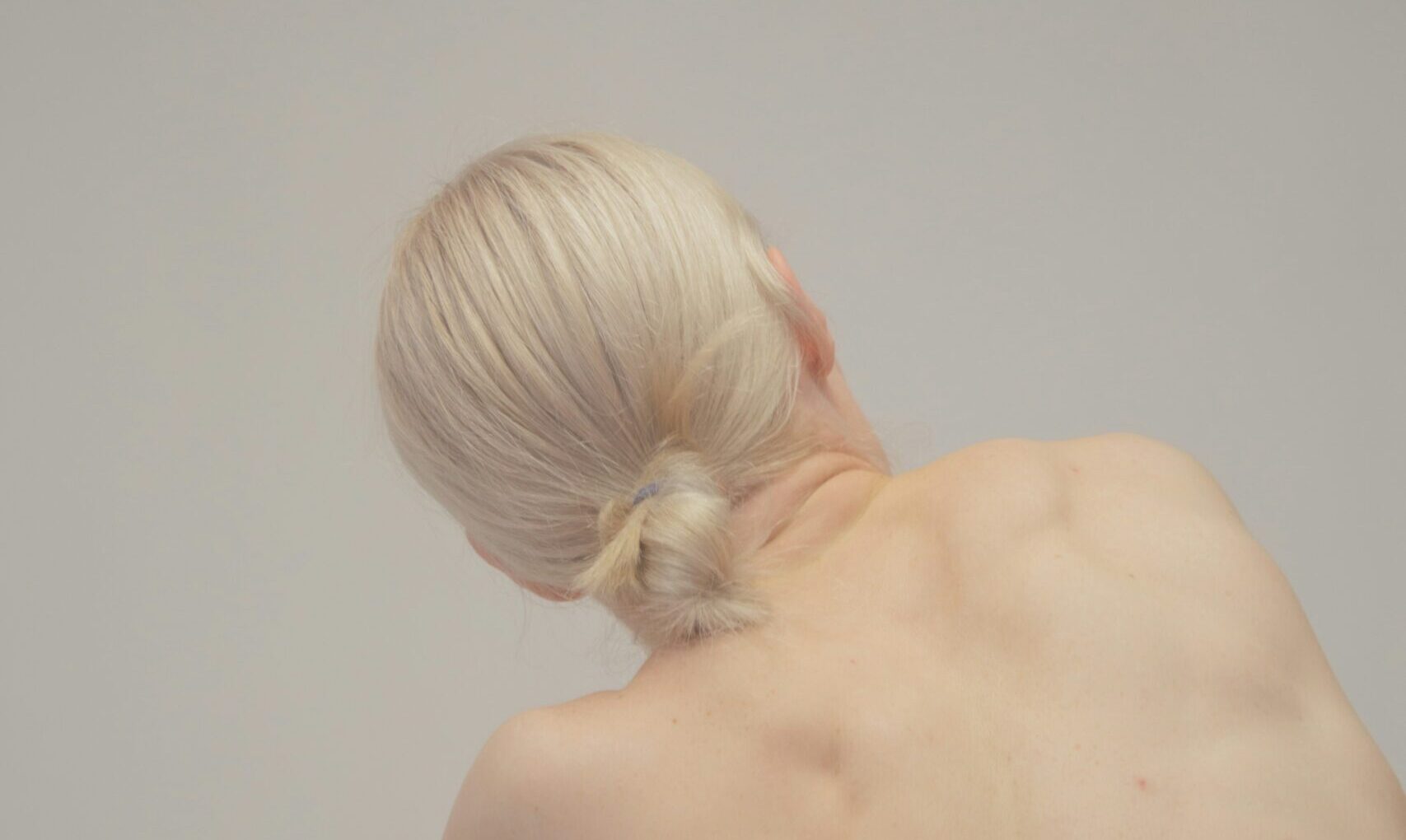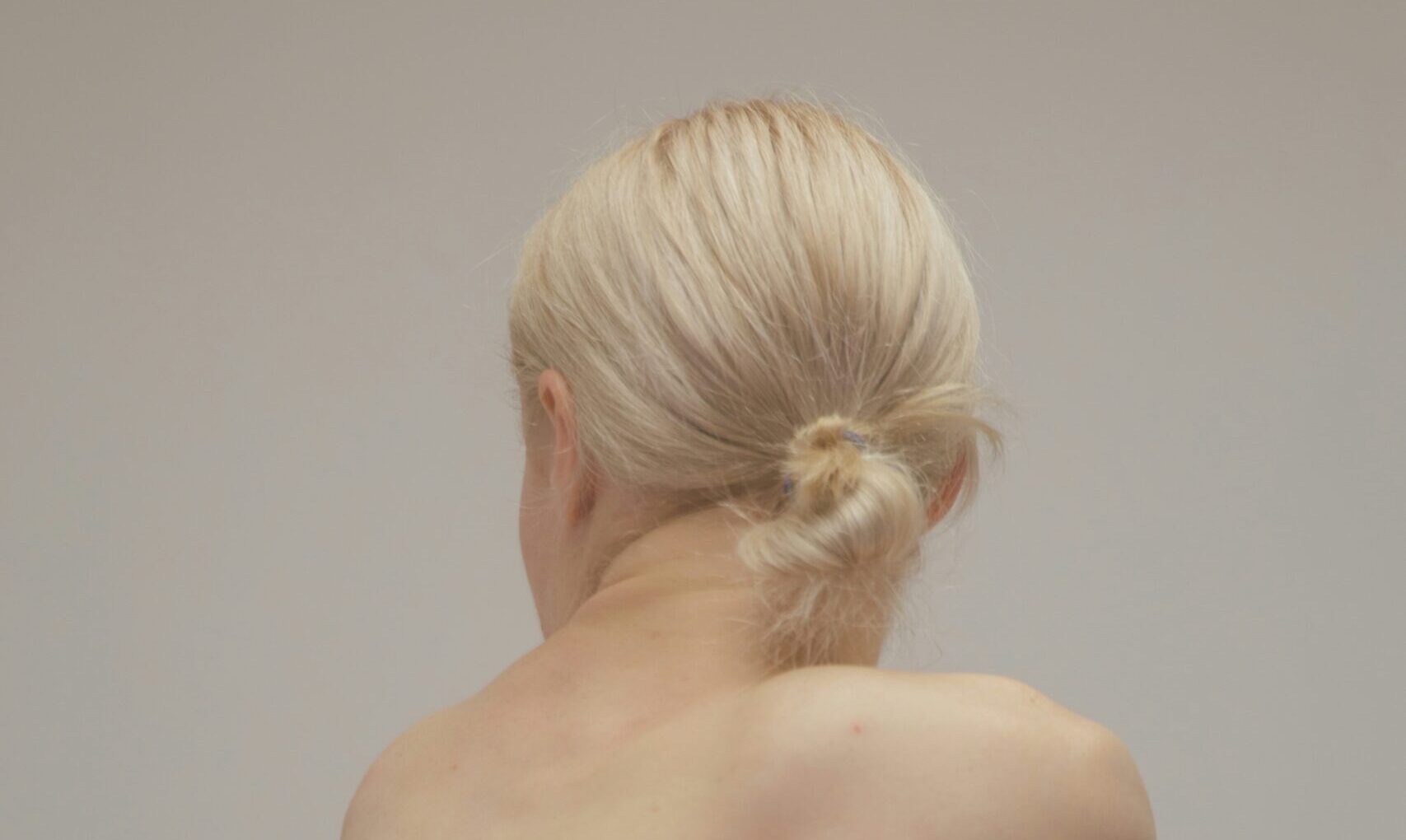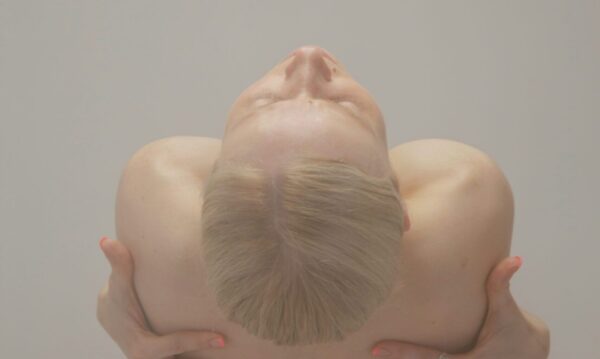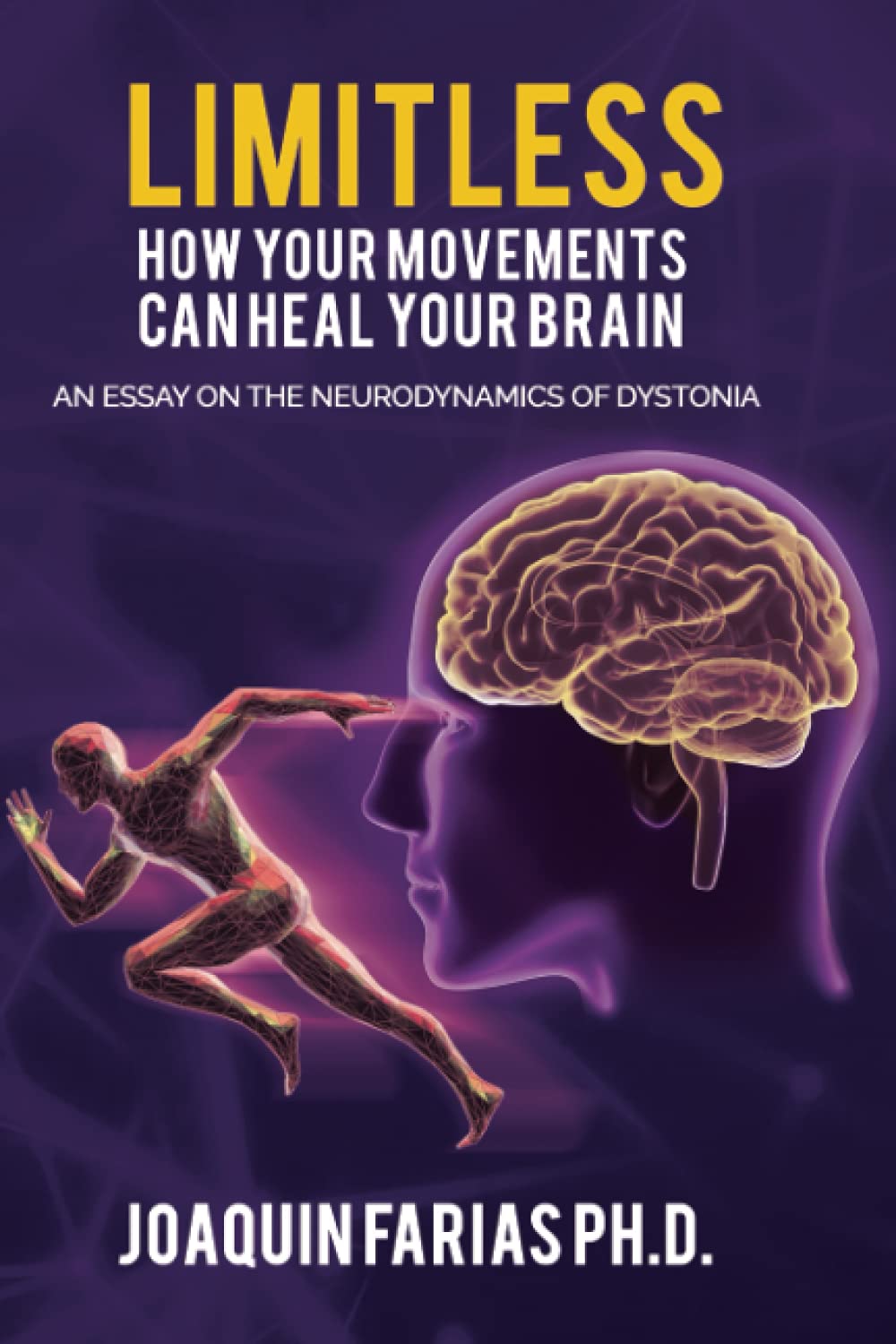



Cervical Dystonia
Spasmodic Torticollis
This webpage is a full resource for Cervical Dystonia, providing a comprehensive introduction to the symptoms, treatment, and recovery training, enabling you to deeply understand its different forms.
What is Cervical Dystonia?
Cervical dystonia, also known as spasmodic torticollis or torticollis, is the most common type of focal dystonia. It results from abnormal functioning of the nervous system and brain, causing involuntary contractions of the neck muscles, which in turn twist or pull the head to one side. The causes of cervical dystonia are varied and may be related to genetics, other medical conditions, or medications. Apart from congenital torticollis in newborns, this webpage primarily focuses on acquired, idiopathic (of unknown cause) primary cervical dystonia, which can occur at any age but typically manifests in middle age, most commonly between 40 and 50 years old, with a higher prevalence in women than in men.
Based on the direction of the spasms, cervical dystonia is mainly categorized into four types: anterocollis (forward), retrocollis (backward), laterocollis (sideways), and the most common form, torticollis (face turned to one side). While some patients experience spasms in a single direction, most patients’ symptoms often combine different directions, such as torticollis combined with retrocollis. The spasms in cervical dystonia can be intermittent or continuous. Intermittent spasms cause the head to exhibit paroxysmal involuntary movements (shaking or tremors), while continuous spasms lead to a persistent abnormal posture of the head and neck.
Due to continuous muscle spasms or nerve compression, many patients experience pain in the neck, shoulders, or back. The degree of pain varies among individuals; some patients only have mild pain, while others experience severe pain or develop chronic pain, which requires treatment to alleviate. Such pain significantly impacts the patient’s quality of life. Patients often feel quite fatigued due to the continuous muscle contractions and pain. Overactive neck muscles can also affect the patient’s posture, leading to pain and stiffness in other muscles not directly affected by dystonia.
The symptoms of cervical dystonia are quite complex. In addition to the four forms categorized by the direction of spasms in the neck itself, many patients are affected in areas beyond the neck, such as the oromandibular region, face, upper limbs, or experience blepharospasm (eyelid spasm) or laryngeal spasm (vocal cord spasm). The diverse symptoms and highly individualized presentation can easily make patients feel frustrated and overwhelmed.
Cervical dystonia not only affects patients physically but can also impact their mental state, social activities, and daily life. Due to the abnormal head position, the patient’s line of sight and perception of spatial distance are limited, which may hinder their ability to walk normally, maintain daily routines, and work. The abnormal posture and involuntary shaking of the head can also make patients hesitant to engage in social activities. Low mood, anxiety, fatigue, combined with pain and physical discomfort, can create a vicious cycle that further aggravates the symptoms of torticollis.
What are the different forms of cervical dystonia?
Before delving into the different forms of cervical dystonia, it’s essential to clarify the definition and usage of the term “torticollis.” Torticollis is derived from the Latin, tortus, meaning twisted and collum, meaning neck. Generally, cervical dystonia is also commonly referred to as torticollis, and these two terms are often used interchangeably. However, they are not entirely synonymous.
“Torticollis,” also known as wryneck, describes a condition where the neck is twisted, causing the head to rotate and tilt to an abnormal angle. It can be caused by various factors, including muscle problems, injuries, infections, or neurological disorders. “Cervical dystonia,” on the other hand, specifically refers to a neurological movement disorder affecting the neck. Therefore, it’s crucial to rule out other potential causes of torticollis. “Torticollis” is a general term describing a twisted neck, while “cervical dystonia” is a more specific diagnosis.
While torticollis and cervical dystonia are often used interchangeably, there are important distinctions between them. “Torticollis” can be a symptom of cervical dystonia, but not all cases of torticollis are cervical dystonia. For instance, some infants are born with congenital muscular torticollis, which is caused by shortened neck muscles and is different from cervical dystonia commonly seen in adults. Within the context of cervical dystonia, “torticollis” is also used to specifically describe a spasmodic form where the face turns to one side. We will provide further details on the various forms of cervical dystonia in the following sections.
Torticollis
Chin towards shoulder
Laterocollis
Ear towards shoulder
Retrocollis
Vertical chin elevation
Anterocollis
Chin vertically down
Symptoms
The primary symptom of cervical dystonia is abnormal head and neck posture, with varying degrees of twisting or tilting depending on the extent of the patient’s involvement. Generally, the more directions a patient is affected in, the greater the tension and the more restricted their movement. The presentation of these symptoms varies from person to person and can change over time.
Historically, the emphasis on head and neck movement disorders in diagnosis led to the neglect of numerous other symptoms in cervical dystonia patients. Additionally, the extreme variability in how symptoms manifested from one person to another made it challenging to discern distinct common patterns within the intricate array of presentations. This limited perspective arose from the understanding of dystonia at the time. However, new research indicates that dystonia is more than just a motor disorder; beyond nervous system dysfunction, problems can also occur with the functions of the left and right brain hemispheres, breathing, and eye tracking, among other things. This evolving understanding acts as an umbrella, encompassing a wide range of potential symptoms and allowing us to better appreciate the diverse nature of dystonia. Below, we will categorize common cervical dystonia symptoms into two main groups: ‘Head and Neck’ and ‘Other.’
Head and Neck
- Abnormal Head Posture: Involuntary muscle contractions cause the head to twist or turn in various ways. Please refer to the four forms of cervical dystonia described above. Patients may present with a single form or a combination of two or three forms.
- Limited Range of Motion in the Head and Neck: Patients may find it difficult to turn their head and neck freely, or they may have a smaller range of motion on one side compared to the other.
- Neck Stiffness: Neck stiffness is one of the initial symptoms for many patients, which later evolves into other head and neck symptoms.
- Pain: Pain is common in cervical dystonia. The range and intensity of pain vary from person to person, ranging from mild discomfort to severe pain that can extend from the neck and shoulders to the back.
- Headache: Cervical dystonia can also cause headaches. Some patients may experience headaches due to prolonged sustained muscle contractions, while others may have migraines, with varying intensity among individuals.
- Head Tremors or Jerks: These may be intermittent or persistent, with the degree and frequency differing among individuals. They can be exacerbated by factors such as stress or fatigue.
- Shoulder Elevation: Uneven shoulder height may occur due to greater contraction of the neck muscles on one side.
Other
- Vision: Although listed under other symptoms, vision is a core symptom to observe. It not only reflects brain function but can also be a primary factor influencing head and neck symptoms. Key visual symptoms to observe include the range of eye movement and whether eye-tracking function is normal. Some patients may even concurrently experience blepharospasm (eyelid spasms).
- Swallowing/Speaking/Facial Muscles: Some patients may have combined oromandibular dystonia, leading to difficulty swallowing or unclear speech, or even spasmodic dysphonia (vocal cord spasms). Some individuals may experience difficulty controlling facial muscles or have Meige Syndrome (primarily affecting the muscles around the eyes, jaw, mouth, tongue, and lower face).
- Upper Limbs: Because cervical dystonia can also affect the back muscles, an imbalance in muscle tension in the neck and shoulder area can trigger upper limb dystonia, such as the inability to relax shrugged shoulders or hand spasms.
- Breathing: Difficulty breathing is a common symptom in dystonia patients. Many experience involuntary contractions of the diaphragm. Breathing difficulties can not only trigger spasms but also affect the balance of the nervous system, leading to dysregulation of the sympathetic and parasympathetic functions.
- Attention: Some patients may also exhibit deficits in brain function, such as impaired attention and difficulty concentrating.
- Social Interaction: Due to concerns about their unusual posture attracting unwanted attention, many patients reduce the frequency of social interactions. Additionally, some individuals find that being in crowds can more easily trigger their symptoms, leading them to choose to socialize less.
Treatment
The ideal treatment for cervical dystonia relies on a multidisciplinary team, including neurologists, movement disorder specialists, physical therapists, psychological counselors, and surgeons, to facilitate the development of personalized treatment plans for each patient. The following is divided into two sections: first, a list of the various current treatment modalities for cervical dystonia, and second, an introduction to neuroplasticity-based motor training specifically developed for dystonia.
Cervical dystonia is a complex neurological movement disorder, and due to its still unclear underlying mechanisms, breakthroughs in treatment have been challenging. Traditionally, most treatments have focused on symptom management, with head and neck twisting and abnormal posture being the primary therapeutic targets. Botulinum toxin injection has become the current mainstream treatment option. Botulinum toxin is a neurotoxin that, when injected into the affected muscles, can weaken muscle contractions and reduce muscle spasms. The effects of botulinum toxin typically last for three to four months, requiring repeated injections to maintain efficacy. Although botulinum toxin has been used to treat dystonia since the 1980s, its treatment effectiveness remains limited. Some patients experience symptom relief after injection, while others respond poorly or show no improvement. This phenomenon may be related to the injection site and dosage, individual differences, side effects, or antibody development. Furthermore, solely treating muscle tension symptoms overlooks other related factors in the brain and nervous system, which may oversimplify the complexity of dystonia originating from neurological lesions.
Surgical interventions for dystonia first emerged with neurectomy, a method of treating muscle spasms by cutting the nerves that govern muscle movement. Building on the success of deep brain stimulation (DBS) in Parkinson’s disease, this technique was subsequently adopted for dystonia treatment in the transition from the 20th to the 21st century. DBS surgery entails implanting electrodes in specific brain locations to modulate aberrant neural activity through electrical stimulation, thus aiming to alleviate dystonia symptoms. However, given the inherent risks and substantial costs associated with invasive surgery, it is not a viable option for all patients. As a result, the standard recommendation is for patients to initially pursue non-invasive therapies and to consider surgical treatment only if these prove insufficient.
For the treatment of cervical dystonia, the two treatment approaches mentioned above have been implemented for several decades, yet significant breakthroughs in treatment effectiveness remain elusive. In response to these treatment challenges, many patients independently combine various so-called ‘complementary’ therapies to alleviate their symptoms. Because each patient responds differently to these complementary therapies, a process of trial and error is often necessary to find what helps. The following lists some common complementary therapies for patients’ reference:
Oral Medications: Currently, no oral medication is specifically approved by the U.S. Food and Drug Administration (FDA) for dystonia. Doctors typically prescribe the following types of medications based on the patient’s condition: anticholinergics, sedatives, anticonvulsants, muscle relaxants, and dopamine-modulating drugs. Before taking any medication, patients should pay close attention to the potential side effects of oral drugs.
Physical Therapy: Helps to improve range of motion, flexibility, neck muscle strength, posture, balance, and coordination, while also reducing pain and discomfort.
Acupuncture: By stimulating specific acupoints, it aims to regulate the flow of Qi and blood to achieve pain relief and muscle relaxation.
Bodywork Therapies: Chiropractic and osteopathic spinal manipulation, structural integration, craniosacral therapy, etc. In recent years, some therapists have explored adjusting the temporomandibular joint (TMJ) to improve symptoms of dystonia.
Somatic Therapies: Feldenkrais Method and Alexander Technique. These approaches use bodily exploration to enhance awareness and movement flexibility.
Watsu: A portmanteau of the English word ‘Water’ and the Japanese word ‘Shiatsu’, it combines the principles of Japanese acupressure with the relaxing effects of floating in warm water.
Autonomic Nervous System Regulation: Therapies aimed at regulating a dysregulated autonomic nervous system to improve motor control.
Farias Technique:
Pioneering Neural Plasticity Training for Primary Dystonia
Why Do We Need a New Treatment?
Despite the numerous treatment options available, the effectiveness of cervical dystonia treatment has remained suboptimal. This may be attributed to several factors: firstly, the underlying pathogenic mechanisms are still unclear, leading to an incomplete theoretical foundation; secondly, there has been an overemphasis on neck symptoms, neglecting other potential causes of motor dysfunction. Reviewing past treatments reveals that almost all have approached the condition from a singular perspective, such as solely targeting neck muscle symptoms or assuming the disorder is simply caused by poor body structural alignment. Clearly, a single-directional treatment is insufficient. We need a therapy that can more broadly encompass the diversity of cervical dystonia, but before that, we also require a more complete theoretical framework capable of painting a more holistic picture of the patient.
What is the Farias Technique?
The Farias Technique is the first therapy specifically designed for primary dystonia. Based on Dr. Farias’ clinical experience with thousands of dystonia patients, this innovative treatment method was developed by establishing a comprehensive patient profile from a large sample size and incorporating knowledge from neuroscience. What sets this technique apart is its unique understanding of dystonia and its core concepts. It goes beyond addressing overt movement disorders by delving deeper into the impact of dystonia on brain function and the nervous system. As a result, the treatment is not limited to movement training but also includes exercises to improve brain function and balance the nervous system.
Movement-Based Training Utilizing Neuroplasticity
The Farias Technique is a movement-based therapy that differs from other approaches by leveraging neuroplasticity and neuroscience to enhance brain inhibition and restore motor control. Dr. Farias observed that specific nerves and muscles are often selectively affected in dystonia, and based on this observation, he identified characteristic movement patterns and developed simple yet effective exercises. These exercises, though basic in nature, serve as the foundation for long-term rehabilitation of dystonia.
What are the unique characteristics of the treatment for cervical dystonia?
The Farias Technique fundamentally differs from previous treatments in its understanding of cervical dystonia. Drawing on his clinical experience, Dr. Farias recognized that the origins of cervical dystonia are multifaceted, encompassing factors like eye tracking, nervous system equilibrium, sensory issues, left-right brain hemisphere balance, and overall brain function, all of which can contribute to abnormal neck movement. Consequently, his approach is comprehensive and integrative, addressing various dimensions – from improving brain and nervous system function to targeting spinal and neck mobility, alongside motor training that incorporates primitive reflexes. This allows patients to discover personalized rehabilitation strategies from multiple avenues. Dr. Farias’ neuroplasticity-driven motor therapy presents a novel perspective on cervical dystonia treatment, moving beyond mere symptom control to leverage the brain’s inherent adaptability and reorganization capabilities to tackle the underlying causes of dystonia.
Cervical Dystonia FAQ
Wondering the same thing?
Join us as we delve into the top questions patients have.

Is there a cure for dystonia?
When discussing diseases, we often use the terms “cure” and “recovery.” The former implies the complete elimination of a disease or condition, while the latter refers to the restoration of health or normal function from an illness or injury. For dystonia, “recovery” is a more appropriate term as most patients experience varying degrees of improvement, and some may even relapse after a full functional recovery. Therefore, it is not accurate to judge solely based on whether or not a cure is achieved. The extent of “recovery” is difficult to standardize and depends on the individual’s activity requirements. For instance, the keyboard manipulation speed required of an e-sports athlete far exceeds that of the average person. Consequently, their expectations for recovery are considerably higher.
How long does rehabilitation take?
Is this a disease caused by psychological factors?
The etiology of dystonia is multifaceted, with the underlying pathology residing in the dysfunction of the neural system, especially the motor control centers of the brain. While emotional factors may exacerbate symptoms, they are not the cause of the disease. Losing the ability to perform daily activities or maintain a career can be a significant blow for patients, and emotional distress is a common reaction. It is inappropriate to attribute the cause of dystonia to patients’ emotional problems.
Will stress make my symptoms worse?
Managing stress is a vital component of dystonia rehabilitation because stress significantly intensifies symptoms. Since individual stress tolerance differs, understanding one’s personal stress limits and developing effective stress-release techniques are essential skills for dystonia patients to acquire. For instance, some individuals with cervical dystonia find their symptoms worsen in social settings or when facing crowds, while their symptoms ease in solitude. Consequently, discovering a lifestyle and stress management strategies that work for the individual is an integral part of their rehabilitation journey.
Will rest cure it?
Generally, most patients do not experience symptom improvement with rest alone. However, a minority of patients may find relief through rest, especially those who initiate rest early in the disease process, before the establishment of aberrant neural pathways.
Is an abnormal movement a bad habit?
Dystonia is not a bad habit, but rather a situation where original movement pathways are replaced by primitive reflexes, which are governed by the central nervous system (especially the brainstem and spinal cord) and are crucial for survival. Primitive reflexes are innate, instinctive reactions that do not require processing by the cerebral cortex, resulting in extremely fast response times. When the brain cannot effectively inhibit these primitive reflexes, this shortcut pathway becomes prioritized and subsequently replaces the motor memories stored in the cerebral cortex. Therefore, the goal of dystonia rehabilitation is to inhibit this shortcut pathway, thereby restoring the previously stored movement pathways.
How can I improve my brain and nervous system?
Why do some people find hats or scarves helpful?
Hats or scarves can be beneficial because they increase sensory input. This improved sensory feedback allows the brain to better regulate movement. Many individuals with dystonia experience some level of body agnosia, and when sensory signals are diminished, it can impair motor control. Consequently, employing touch or sensory tricks to augment sensation are approaches that patients can explore.
What should I do if my symptoms change or spread to other areas?
Changes in symptoms are a common occurrence. The human body has compensatory mechanisms, and when muscle or nerve function is impaired, the body will attempt to adjust, which may lead to changes in existing symptoms or the appearance of new ones. Additionally, some patients initially only experience symptoms in the neck, but over time, symptoms may also appear in other parts of the body. When the brain’s ability to inhibit movement is insufficient, the symptoms of dystonia can worsen and even affect other areas of the body. It’s important not to worry excessively; reach out to your therapist in a timely manner. They will design suitable treatment strategies based on the specific changes in your symptoms and overall condition.
How should I deal with recurring symptoms?
Fluctuations in symptoms are common. Symptoms can vary with daily physical conditions, and influencing factors may include fatigue, sleep, stress, digestion, infection, inflammation, and hormonal fluctuations. These factors are interconnected and can affect the brain’s ability to inhibit movement. Therefore, it’s not necessary to be overly concerned about minor daily fluctuations in symptoms; the focus should be on the long-term rehabilitation trend. As long as the trend continues upwards and the restricted range of motion gradually improves, there’s no need for excessive worry. However, if significant changes in symptoms occur suddenly, it is still recommended to seek medical help promptly.
Rehabilitation Tips
For Cervical Dystonia

Diagnose
Accurately diagnosing the cause of neck muscle tightness is crucial, as various neurological disorders can lead to this symptom. If you suspect you have cervical dystonia, it is essential to seek timely medical evaluation. Neurologists and movement disorder specialists will conduct a thorough examination, including symptom assessment, medical history review, and neurological examination, to reach an accurate diagnosis. Correct diagnosis is the cornerstone of effective treatment; misdiagnosis not only wastes time but can also delay treatment and cause physical and psychological stress for the patient.
Neurologist
Understanding

Treatment
1. Prioritize non-invasive, safe, and harmless therapies.
2. Seek out a highly experienced therapist. A lack of specialized knowledge or observational skills, or the use of generic teaching methods, can be counterproductive.。
3. Treatment plans should be adjusted based on the stage of the condition. Regular consultations with a therapist are essential for adjusting treatment plans as the symptoms of dystonia fluctuate and compensatory mechanisms develop.
4. A comprehensive approach is essential for effective treatment. A one-size-fits-all approach is not suitable for all patients. Successful rehabilitation requires individualized treatment plans.
Join the Dystonia Recovery Program

Make an appointment with Dr. Monica Chen
Tips
1. Don’t overdo neck exercises: Patients with cervical dystonia often fixate on neck exercises due to the concentration of symptoms in the neck. However, the neck structure is complex, and excessive or improper exercise can lead to injury. Gentle neck movements with a gradual increase in range of motion are recommended as a safe and effective rehabilitation method.
2. Movement is key to reducing stiffness: Pain or limited mobility often causes patients to unconsciously maintain a fixed posture, which can increase pressure on specific muscles and trigger more pain. Even with limited range of motion, moderate and regular dynamic activity can help relieve muscle tension and promote blood circulation. Even small movements can be helpful.
3. Aerobic exercise, such as brisk walking, running, and swimming, significantly benefits cervical dystonia rehabilitation. These exercises not only promote blood circulation but also increase the range of motion in the cervical spine and the whole body. Patients can choose the aerobic exercise that suits them best between brisk walking and running. For patients with a more limited range of motion, water walking with less resistance is a good option.
4. Breathing exercises significantly benefit the nervous system: Dystonia not only affects movement but may also be accompanied by imbalances in the nervous system and left-right brain hemisphere function. Breathing exercises can effectively balance the autonomic nervous system. Inhalation activates the sympathetic nervous system, while exhalation activates the parasympathetic nervous system. In addition, breathing exercises can increase cerebral blood flow and promote neuron regeneration, which helps to improve nervous system function.
5. Precision is key; more exercise is not better: The focus of dystonia training is on precision rather than repetition, because we are training neural pathways, not just muscles. Sometimes excessive exercise can over-fatigue the nervous system, leading to counterproductive effects. For practice, it is recommended to divide long practice sessions into short, multiple sessions.
6. Maintain a balanced diet and avoid inflammation: The gut is closely related to the brain, and a balanced diet is crucial for maintaining “gut-brain axis” health. In addition, it is important to avoid foods that cause inflammation. Common inflammatory foods for dystonia patients are gluten and lactose.span>
7. Stress and life management: The higher the stress, the more symptoms. Each person’s tolerance and perception of stress is different. Understanding your own stress threshold is an important part of rehabilitation.
8. “Rest” is also a practice strategy: Consider appropriate rest and calming the mind and body as a practice strategy. Do not over-exercise.
9. Don’t over-expect and put pressure on yourself: Dystonia rehabilitation naturally has ups and downs. Just focus on the long-term upward trend. Every day is different, so observe it.
10. Take a nap! Just as a computer needs to hibernate and recharge, the brain also needs rest to restore function. Timely rest can help dystonia patients relieve spasms.
Psychological Support
Living with dystonia presents numerous trials. Individuals with this condition must confront persistent symptoms, cope with others’ unfamiliar stares, and navigate the general public’s lack of comprehension. Given the absence of a definitive treatment protocol for dystonia and the experimental nature of many therapeutic approaches, patients often experience uncertainty and disorientation regarding their rehabilitation. Seeking psychological counseling or connecting with dystonia support groups and mutual aid communities can offer crucial support and companionship throughout the extended recovery process.
